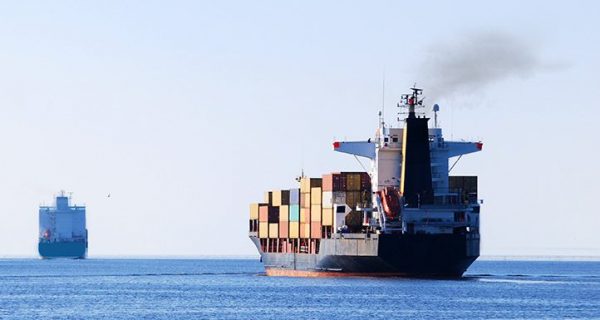The shipping industry must and can play a significant role in addressing global warming by reducing its GHG emissions, according to a 4-year research, ‘Shipping in Changing Climates’, supported by over 30 partners from the industry, including Lloyds Register, Rolls Royce, BMT, Shell and MSI.
The research, presented in London International Shipping Week, concludes international shipping must cut GHG (greenhouse gas) emissions at least 50% by 2050. Rising trade and demand means this will require substantial efficiency improvements in the average ship, which will have to reduce in carbon intensity some 60-90% by mid century.
Katharine Palmer, Environmental Manager, Lloyds Register, said: “Following our low carbon pathways 2050, we have seen a transition in the mindset, with broad industry buy-in, to do something. But the question we are asked now is, ‘how are we going to do this in practice?’. The next step we are taking is to look at what threshold levels are needed to make zero emission technologies viable and what our responsibility is in handling this inevitable change.”
According to the report, switching to LNG or improving energy efficiency of ships alone is not sufficient, but greater reductions in GHG will only be enabled through a shift away from fossil fuels to renewable energy and low carbon fuels/energy. Zero emission ships, already becoming part of the global fleet on certain niche routes, will increasingly become the mainstream technology with significant penetration into the market from approximately 2030.
Adam Kent, Director, Maritime Strategies International : “…Shipping is clearly in a changing climate: clients are already regularly asking us about how the global shift away from fossil fuels for energy production towards renewables, and increasing electrification reduces demand for fossil fuels, and is changing demand for wet/dry bulk shipping. And important shifts are also happening outside of energy commodities such as the iron ore and coal trades as steel production moves to electric arc production…“
SCC recommendations include:
- Operational CO2 intensity for all containerships, tankers and dry-bulk must be cut 60-90% on 2012 levels by 2050 just to reach a two degree pathway. The current IMO efficiency regime just leads to a 3% reduction in emissions by 2050.
- Major companies should consider undertaking climate risk analysis, and implementing internal carbon pricing to prepare their business for forthcoming regulation under tougher climate policies
- The use of hydrogen or battery technology is viable but may require a fundamental change in operational philosophy and voyage planning, and care will need to be taken of upstream emissions
- Technology can make some difference, but it will take a lot of technologies and must include wind assistance. Speed reduction will be important even with future technology. Lowering carbon factor of fuels will be needed for major reductions.
- Zero operational emission ships will need to increasingly penetrate fleets especially from 2030.
- To meet climate targets ships will need to slow unless they can run on cleaner fuels such as hydrogen, biofuels or battery packs.
Tristan Smith, Reader in Energy and Transport UCL-Energy: “The risk for shipping companies is that, distracted by nearer-term regulations on SOx and other air pollutants, they fail to spot the growing political pressure behind the sector’s decarbonisation and the development of enabling technologies in the wider economy. The opportunity exists in spotting this change, and its synergies with compliance with other air pollution regulation. Companies need to identify which of biofuels, electrification and/or the use of synthetic fuels such as hydrogen, are best suited to their company’s decarbonisation pathway. These are not trivial changes and so need to be prepared for now.”






























































